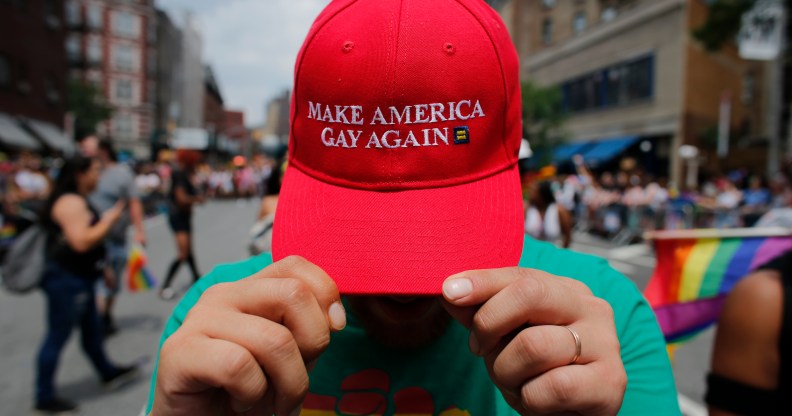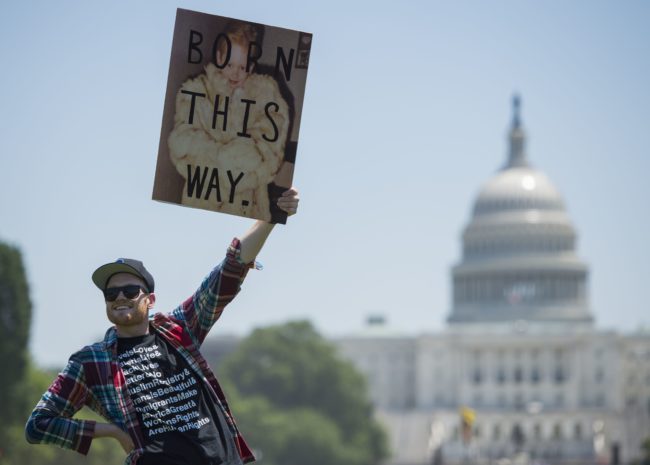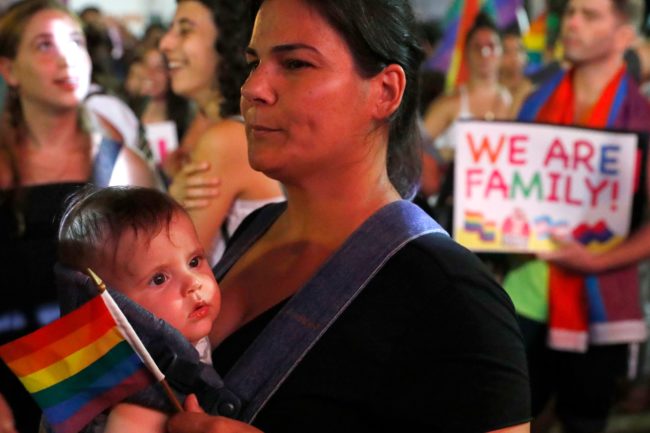US LGBT population increases, but they are poorer and younger

The U.S. LGBT population is increasing. (Kena Betancur/Getty)
The amount of people who identify as LGBT+ in the US has increased to 11.3 million, and they are younger, poorer, and more diverse than the general population, according to a new study.
The figures from Gallup show that LGBT+ people now make up 4.5 percent of the population, up from 4.1 percent in 2016 and 3.5 percent in 2012. This more than doubles the figures for Britain, where the Office for National Statistics revealed only 2 percent of people identify as LGB.
The Williams Institute led further examination of the Gallup survey, creating a more comprehensive picture of LGBT+ life in the U.S.
Reuters reports that Kerith Conron, research director at the Williams Institute, attributes the change to people feeling more comfortable identifying as LGBT.
Washington, DC, had the highest percentage of LGBT+ people in the country, at 9.8 percent.
In North Dakota, only 2.7 percent of people identified as LGBT+, the lowest in the country.

Washington D.C. recorded the highest percentage of LGBT people with 9.8 percent of the population. (ANDREW CABALLERO-REYNOLDS/AFP/Getty)
LGBT+ people are younger, US statistics reveal
The Williams Institute, a UCLA think tank that specialises in LGBT+ research, found that younger people were the most likely to identify as queer.
56 percent of LGBT+ adults are under the age of 35, compared with only 28 percent of non-LGBT+ adults.
LGBT+ people also have a worse diet and less money than the general population.
And while 47 percent of the general population are over the age of 50, for LGBT+ people that figure drops to 23 percent.
Conron says that younger people feel more comfortable identifying as queer “because they are growing up in a time when it’s more acceptable to acknowledge those feelings and act on them.”
LGBT+ people are poorer, study shows
LGBT+ people have a worse diet and less money than the general population, according to the Williams Institute.
Queer people are more likely to have a household income below $24,000, and consume a less nutritional diet than their non-LGBT+ counterparts.

LGBT+ people are more likely to be young than the general population. (JACK GUEZ/AFP/Getty Images)
The study also found that people of colour make up a higher percentage of LGBT+ people than they do in the general population.
Conron says that more research is required to find out the reasons behind this.
Is the real LGBT+ statistic closer to 10%?
According to Conron, a much higher percentage of respondents identify as LGBT+ in anonymous polls.
He says that close to 10 percent—the figure popularised by sexologist Alfred Kinsey over 70 years ago—of people admit to experiencing same-sex attraction.

